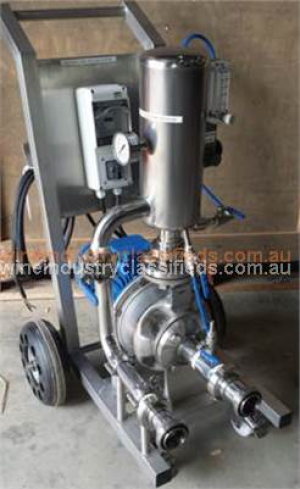Enogas Flotation
The flotation process is a technique of separation for fruit juices that removes the suspended solids exploiting their low density and provoking their floating through the injection of a gaseous stream and, if necessary, some additives. The separation is made by the removal of the clarified product from the bottom of the tank (‘reverse racking’).
The Enogas Flot, applies a discontinuous flotation proces circulating the enzymed treated juice on an external tank to create a deep mixing between the liquid and gas. The commonly used gases are nitrogen or air (especially if a hyper-oxidation result is required on pink juices like Pinot Gris). A filtration additive, usually a specific high electrical charge food grade gelatine, is normally dosed into the juice during the process to help adhere the gas to the solid particle.
The flotation process takes between 1 to 2 hours with a holding period of between 3 and 5 hours before the racking commences. The best results for compaction of the solids occurs after longer holding periods: usually overnight.
Advantages:
First of all, the product is treated at fermentation temperature. There is no cold settling and consequently no warming juice up, saving on substantial refrigeration/electricity costs.
Reduced solids percentage (especially if longer compaction times are applied), meaning less juice being downgraded by filtered by a RDV. Solids levels can be 25 – 50% less than seen in static settling.
With the flotation unit it’s not necessary to wait 24+ hours for the static decantation and subsequent warming up. After about 3 hours from the end of the flotation process it’s possible to proceed with racking and then yeast innoculation.
A successful floated juice will also remove indigenous yeast, removing competition to the innoculated cultures a resulting in cleaner ferments.
Models:
Enogas Flot 100 - with a production of 10,000lts per hour
Enogas Flot 300 - with a production of 25,000lts per hour
Enogas Flot 500- with a production of 50,000lts per hour
Options:
S/Steel Sieve to remove gross solids (skins and seeds) if in excess
Peristaltic Pump for dosing of bentonite




